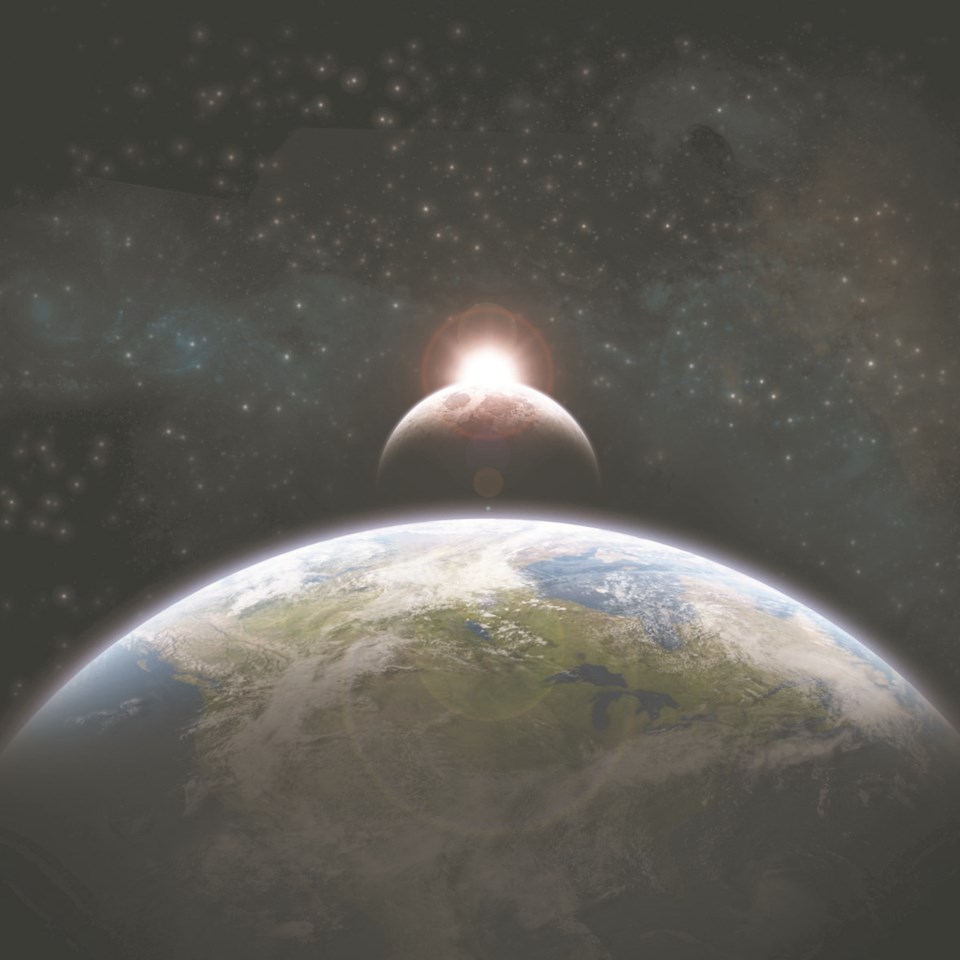Anyone looking for some star power can get an eyeful of it tonight as local astronomers celebrate all things space.
April 21 is International Astronomy Day, a global celebration of astronomy and space science.
Astronomers such as Murray Paulson will be at the southwest corner of St. Albert Place tonight with their telescopes to help residents plumb the depths of creation as part of the festivities – assuming the skies are clear.
“The moon will be well-placed for observing,” Paulson said, as will Venus and several double star clusters.
The Royal Astronomical Society of Canada’s Edmonton branch will have a booth and many space-related photos at the Telus World of Science in Edmonton today, said Frank Florian, space science director at the science centre. Guests will get to use sidewalk and the giant observatory telescope from 1 to 4 p.m. and 7 to midnight, weather permitting.
International Astronomy Day is meant to encourage interest in astronomy, Florian said.
“There’s so much people miss out on because they don’t look up.”
Florian said late February to April is fireball season on Earth for reasons that aren’t totally understood, for example, so your odds of seeing meteors are good if you turn skyward. If you’ve got super-vision, you might even see the just-launched Transiting Exoplanet Survey Satellite, which, much like the famous Kepler Space Telescope, will spot planets by watching for telltale dips in a star’s brightness when they pass in front of them.
April 22 will see the Lyrid meteors peak. This meteor shower, so named because it appears to radiate from the constellation Lyra, happens each year when the Earth passes through the dust trail of Comet Thatcher, which last visited Earth in 1861, reports Space.com.
Florian said the big show in space this summer will be on July 31 when Mars reaches the closest point in its orbit to Earth – something that last happened in 2003 and won’t happen again until 2035. While Mars won’t look gigantic, as some Internet rumours claim, the planet will be close enough for you to pick out its polar caps and other features using a telescope.
Astronomy is a great way to get youths interested in math and physics, said Paulson, adding that it was what inspired him to become an engineer.
“It stimulates your mind,” he continued, and turns it towards big questions about why we are here and where we are going.
“You don’t have to be religious to be curious about the nature of things.”
The St. Albert astronomy day event runs from 9 to 11 p.m. Call 780-459-1168 for details.




